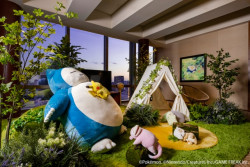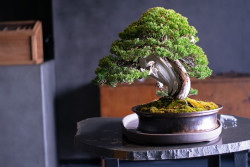
Summer Chills
Why August is the ghoulest month
By Matt Alt
In the West, Halloween marks the day ghouls come to play, but in Japan fall is perfectly safe—it’s the doldrums of summer you need to worry about. These months have long been associated with ghost stories, and August marks the peak of scary season.
The reason is simple. August happens to be when the Obon festivals are held—dances and grave-visits to welcome the spirits of ancestors back home for a short vacation from the Land of the Dead. The thing is, when the “lid” of the underworld is lifted off, other strange creatures, like yokai (folkloric monsters) and yurei (dangerous ghosts) see their opportunity to steal out.
From this tradition came Japan’s tradition of kaidan—ghost stories. Initially popularized in the West by Lafcadio Hearn, the first to put many classics on paper in any language, summer spooky tale-telling is a centuries-old tradition in Japan.
Perhaps the most famous form of kaidan involves an Edo-era parlor game called hyakumonogatari—the hundred tales. A group of people tell scary stories until dawn, extinguishing a candle for each tale told. Legend has it that when the hundredth candle is finally put out just before the sun rises, something will happen. What exactly isn’t clearly explained—but we’re pretty sure it involves something unpleasant.
In the end, perhaps there’s another reason why Japanese love to tell yurei stories when they do. It’s hard to imagine surviving a summer here without air conditioning, so perhaps the old Tokyoites cooled themselves down with a shiver from a tale of terror.
Creepy Questions
Do spectral scribes Hiroko Yodo and Matt Alt ever get scared?
How do you complement each other?Hiroko: A willingness to talk things through until we reach a consensus.
Matt: Respect for each other’s strong points. Hiroko is the expert on Japanese history and the supernatural and spiritual. I’m the native speaker with a strong sense of what appeals to the non-Japanese audience. It’s worked so far!
Co-writing can be tricky, especially as a couple. How do you face difficulties?
M: Sometimes the debates get heated—I suspect not many other couples argue over the finer points of the Battle of Sekigahara or the right way to weave a curse-doll. But fostering those debates is what distinguishes us from other Japan writers who are either American or Japanese individuals writing alone.
Where did this interest in the occult come from?
H: My girlfriends and I used to talk about how to dodge yokai like Kuchisake-onna, the Slash-Mouthed Woman, and told ghost stories when we overnighted together. Since becoming bilingual I’ve dreamed of bringing them to a foreign audience. It’s a huge part of Japan that doesn’t get much attention abroad, J-Horror aside.
M: There is a strong occult theme running through a lot of the Japanese anime, manga, and movies I grew up watching. This undercurrent is stronger in Japan—which has a long tradition of ghost stories and spooky tales—than in America where I grew up.
What was the best and worst part of writing Yurei Attack?
H: The worst part was when the original publisher [Kodansha International] decided to shut their doors halfway through writing! We were worried the book that we’d worked so hard on wouldn’t have a home.
M: I guess that would make the best part joining forces with Tuttle to release it and the other books in the series in all-new formats. It’s so rare for authors to get a chance to revisit and spruce up a book they’ve written.
Was there anything in the book that genuinely got the shivers going?
M: I was genuinely creeped out during my research of wake-ari bukken, which are real-estate listings of “troubled homes”—sites of murders, suicides, etc. Sellers are required by law to disclose this sort of thing, and an industry of relators who not only disclose but play up their homes’ horrible histories has sprung up as a result. Reading the listings is like a window into the darkness of the human soul, and it wasn’t a pleasant experience.
If you were condemned to be one of the yurei, which would it be?
H: Yurei are created when people die horribly, in great physical or emotional pain. So I definitely don’t want to be a yurei! Now if you ask which one I’d like to be friends with, that’s another question…
What’s your top tip in Tokyo this spooky season?
H: Your local Obon festival. Those aren’t yurei, though. The Obon is a festival to welcome your departed ancestors back for a visit.
M: For starters drop by to show your respects to Taira no Masakado’s head near Tokyo station [see left]. And you can’t beat a night stroll in Yanaka Cemetery.
H: Or Mount Takao—take a night hike there and you might run into a tengu!

Yurei Attack! The Japanese Ghost Survival Guide
By Hiroko Yoda and Matt Alt, illustrations by Shinkichi (Tuttle, July 2012, 192pp, ¥1,400). Available from major bookstores and Amazon.jp. Text abridged to fit. Excerpts reprinted with the kind permission of the publisher.







